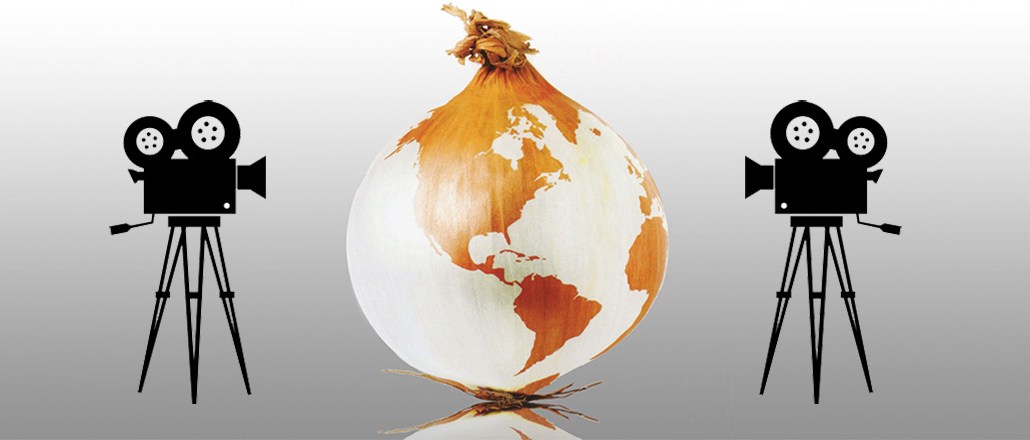Insights from CTV leaders at Dentsu, Horizon Media and more
Branded-content growing pains: The Onion goes ‘back to basics,’ restructures Onion Labs

Being funny is serious business. The Onion has come a long way from its roots as a traditional publishing company. In recent years, it has phased out print to focus on digital and had built a video studio and in-house agency, Onion Labs, to create ads for brands including Dove, MTV and Orbitz in its signature parody style.
But in a memo to staff last week, CEO Mike McAvoy said that while the Chicago-based company has grown its revenue, it hasn’t been able to keep pace with its goals. The Onion has been exploring a possible sale for the past year, and in the recent memo, McAvoy said it’s still looking for an investor that can “help invest in our long-term success.” McAvoy also announced a restructuring of Onion Labs along with a series of management changes.
Formed in 2012, Labs has been the engine of the company, driving 80 percent of its revenue, and The Onion once had ambitions of doing a Super Bowl ad. In the memo, McAvoy said Labs has been “losing traction with media agencies,” requiring a shift in staffing. Instead, The Onion would embrace a “return to basics,” focusing on its publishing sites. Those now include The A.V. Club about pop culture, BuzzFeed parody site ClickHole and its latest, celebrity tabloid parody site StarWipe in addition to the flagship Onion parody news site.
“But even though we’ve done well, we have not been able to keep pace with our ambitious goals for Onion Inc.,” McAvoy wrote. “As the media landscape continues to evolve, we need to continue to be smart and agile. To that end, we’re going back to basics, which for us means concentrating on creating the best publications on the planet and connecting them correctly with advertisers. All corners of the company need to work together to achieve those goals.”
Elaborating on the memo, Kurt Mueller, The Onion’s chief operating officer, said that Onion Labs was on track to grow revenue 20 percent this year, but that it was seeing less demand for assets that would run outside The Onion’s properties. That’s required a shift away from Onion Labs’ creative-heavy staff in favor of adding account people who are tasked with making sure content reflects both the brand and publisher’s voice, and is well distributed. As part of that, The Onion laid off two creative people.
“We were overstaffed for the non-media-agency part of the business,” Mueller said. “We have less demand for a ton of new content for a brand. There’s demand, but we just overestimated what the demand is.”
In a general way, the takeaway of The Onion’s evolution has to do with the challenges of being a small, independently owned publisher that hasn’t raised outside capital. The Onion’s sites reached 16.5 million uniques in August, up 20 percent year-over-year, according to comScore. Its biggest, flagship site, TheOnion.com, reached 9.4 million, up 11 percent in the same period. Even adding in its built-in social distribution footprint, including 4.9 million Facebook and 8.4 million Twitter followers, The Onion would go in the niche bucket for many advertisers.
Its issues also speak to the challenges particular to doing branded content and, specifically, The Onion’s style of branded content. The competition for branded-content dollars generally has grown as brands have turned away from traditional display advertising. In addition to traditional agencies and other publishers, there are other humor outfits like VC-funded Funny or Die and IAC’s CollegeHumor producing content for brands that want to show their funny side.
And there’s a limited number of brands that are at ease with talking in the sarcastic voice of The Onion.
“It’s difficult for many brands to get comfortable with the idea of being the butt of the joke opposed to the hero in the story,” said Raymonde Brillantes-Green, vp, media director at Digitas LBi. “Most well-known brands have a clear identity and strict brand guidelines that they do not easily depart from. While the Onion Labs in theory is a great idea, from an execution standpoint, it is probably quite an undertaking on a campaign-to-campaign basis. Agencies and the brands themselves, in my opinion, are still the best people to produce branded content since they are most familiar with the brand itself.”
More in Media

Ad Tech Briefing: The ‘plumbers’ posing as the unlikely saviors of the internet
After several false dawns, can Cloudflare’s ‘anti-AI scraping tool’ finally offer publishers a road to commercial redemption?

Generative AI, not ad tech, is the new antitrust battleground for Google
Global regulatory scrutiny is shifting from Google’s ad tech and search dominance to generative AI, as they aim to address the most pressing threats to publisher business models.

Yahoo takes cues from platforms as it offers more editorial control to creators
Through its creator program, Yahoo is evolving from its roots as a content aggregator and editorial publisher to more of a distribution platform for individual creators.





